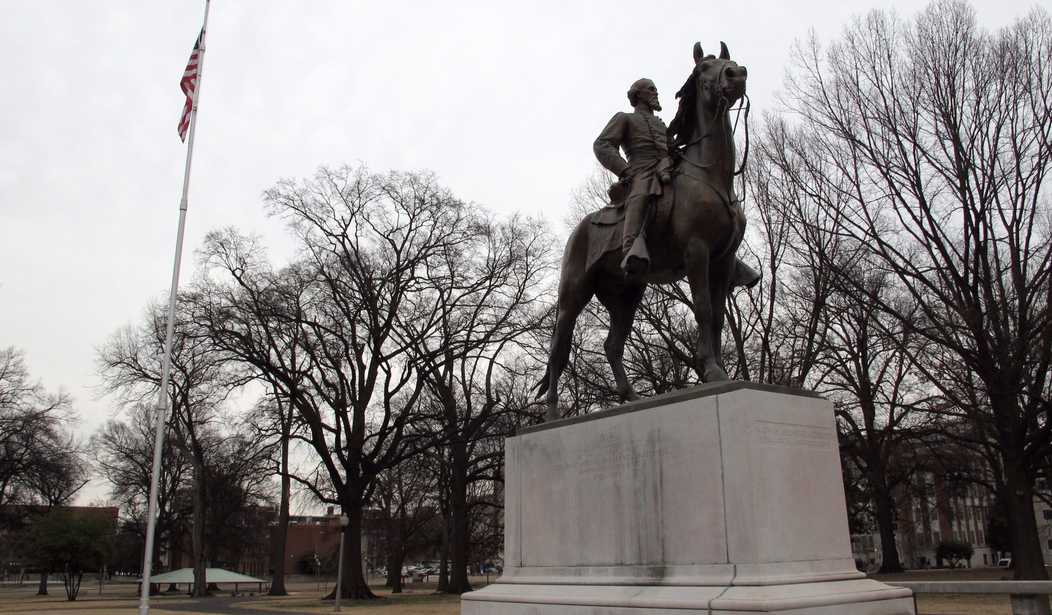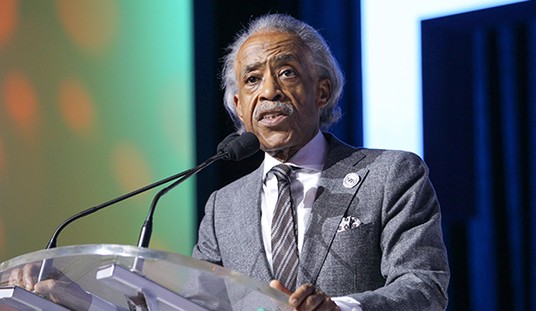A Jim Crow-era statue of Confederate general Nathan Bedford Forrest, an early leader of the Ku Klux Klan and pre-war slave trader, was removed from a Memphis park tonight under police guard immediately after the city council gave the go-ahead to sell the parkland.
The city circumvented state law, and the Tennessee Historical Commission’s denial of the city’s waiver request in October, by turning the public property into private property. The council unanimously voted to sell Health Science Park, where the Forrest statue sat, and Fourth Bluff Park, home to a statue of Confederate president Jefferson Davis, to nonprofit Memphis Greenspace Inc. for $1,000 each. That entity used its own private resources to remove the statues, while not removing the graves of Forrest and his wife.
“History is being made in Memphis tonight,” said Mayor Jim Strickland. “…It’s important to know why we’re here: The Forrest statue was placed in 1904, as Jim Crow segregation laws were enacted. The Davis statue was placed in 1964, as the Civil Rights Movement changed our country. The statues no longer represent who we are as a modern, diverse city with momentum. As I told the Tennessee Historical Commission in October, our community wants to reserve places of reverence for those we honor.”
Strickland said the council had been “laying the groundwork” over the past few months for the sale of the land to the nonprofit, which filed incorporation papers with the state at the beginning of October. Legislation passed by the council in September, driven by “an avalanche of support” after the August white supremacist violence over removal of a Robert E. Lee statue in Charlottesville, Va., allowed for the sale of the land at less than fair market value.
Per terms of the agreement, the nonprofit must keep the green space open to the public and maintain the land.
“Republicans and Democrats, a unanimous city and county government, Gov. Bill Haslam, scores of diverse members of the clergy, prominent members of the business community, and citizen demonstrators all came together to support this same cause,” the mayor continued. “In all of my life in Memphis, I’ve never seen such solidarity.”
Strickland stressed the importance of the removal coming before the April 4 50th anniversary of the assassination of Martin Luther King, Jr.
“So if you’ve spoken up on this issue, no matter which side, I challenge you: Take that energy and apply it to the hard challenges our residents face every single day. Volunteer on the front lines. Mentor a child to make a 1-on-1 to impact on a life. Help teach a kid to read,” he urged. “Don’t just talk about it — take action in improving the quality of life in every home, on every block, in every single neighborhood of this great city.”
Crime tape, police cars and bulldozers. Forrest is about to come down. pic.twitter.com/VTzYfz6wO4
— Maya Smith (@mayarolani) December 21, 2017
Within minutes of the council taking action, police cars ringed Health Sciences Park as a crane moved in to remove the Forrest statute at 9:01 p.m. local time. About an hour and a half later, the Davis monument was removed.
The Memphis City Council originally voted in 2015 to move the Forrest statue and move the graves of Forrest and his wife back to Elmwood Cemetery, where they were originally buried before being disinterred in 1904.
Rep. Steve Cohen (D-Tenn.) said in a statement that “hopefully, the Forrests will be returned to their rightful and preferred burial spot — Elmwood Cemetery.”
The city’s chief legal officer, Bruce McMullen, said the statues were being stored at a location that wasn’t being disclosed for security reasons.









Join the conversation as a VIP Member